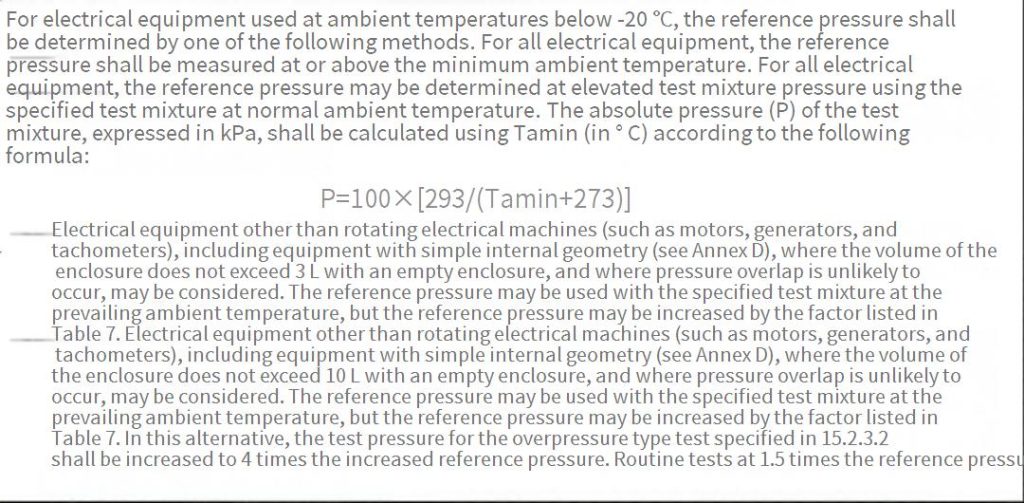Ambient temperature refers to the temperature of the air or other medium surrounding the equipment or component.
Under normal circumstances, the ambient temperature for equipment operation should be -20 to 40 ℃. In such cases, no additional ambient temperature marking is required. However, when the equipment is expected to be used in an environment outside this temperature range, it is considered a special situation. The marking should include the symbol Ta or Tamb along with the upper and lower limits of the ambient temperature. If this is not feasible, the symbol “X” should indicate the special operating conditions including the upper and lower limits of the ambient temperature. This means that typically, the ambient temperature requirement of -20 to 40 ℃ for equipment does not need to be marked on the nameplate or the explosion-proof certificate. But if the equipment is intended for use in an ambient temperature range other than this, it must be marked on the product nameplate and certificate, and specified in the user manual.
What are the special requirements for ambient temperature for flameproof electrical equipment?
Firstly, low temperature has an impact on the explosion pressure, and the corresponding regulations are:

When the ambient temperature is below -20 ℃, the reference pressure should be measured by low-temperature or pre-pressurization methods. The reference pressure obtained in this way is much higher than that measured under normal temperature and pressure. Therefore, the strength requirements for the enclosures of electrical equipment in low-temperature environments are higher, and this should be taken into account during the design process.
Secondly, the influence of high temperature on the internal ignition non-propagation test and the corresponding regulations:

That is, when the ambient temperature is higher than 60 ℃, the internal ignition non-propagation test should be conducted by means of high temperature or pre-pressurization. The explosion pressure generated in this way is greater than that under normal temperature and pressure. Equipment that can pass the test under normal temperature and pressure may not pass the internal ignition non-propagation test under pre-pressurization. This places higher requirements on the length, gap and shell strength of the flameproof joint surface of flameproof equipment used in high-temperature environments. These factors should be taken into account during the design process.

